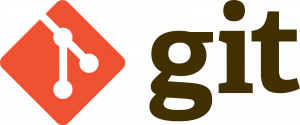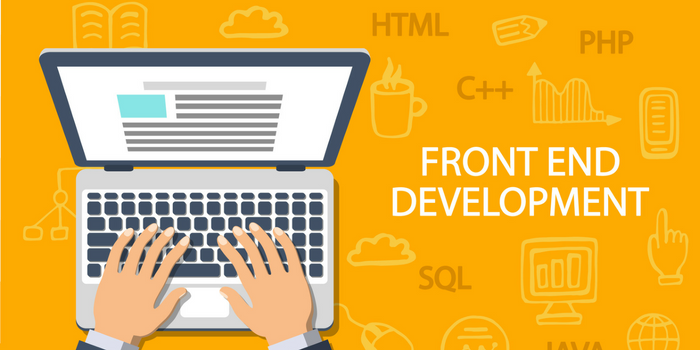Having learned HTML, CSS, and JS, Front-End Developers (FED) are forced to take functionality into account when creating user experiences or making sure that the two disciplines work as one from a development perspective. They become all-rounded, having to understand what is actually happening between the AJAX data and the PHP file that’s sending off a mail or returning errors.
If you’re already sure about front-end development, go ahead and read on.
Front-end development skills needed
When starting out in front-end, you might not be sure where to start. There are so many options available not only programming language-wise, but regarding tools, frameworks, and technologies as well. So make sure you are prepared of the open sea. Or as Ivan (Ivan Kutil – Google Developers) would state it: “Front-end development is like an ocean. You happen to have a ship, but no map. First learn the shallow waters, then go deep.”
-
Learn HTML & CSS. And become good at it.

I guess there’s no way around it. Learn HTML & CSS. Why? Because of the basics matter. There are all kinds of different online courses available on how to get started with HTML and CSS. First things first. Sign up at Online courses like Coursera or Team Treehouse. After finishing some initial courses, go ahead and create some static web pages and iterate over and over again. I also recommend developing some small UI elements for practicing your newly learned HTML & CSS skills. Codepen.io is a great playground for that. Browse other people’s projects and participate in the community there.
-
Build things.
Playing around with (small) UI elements is one thing. Creating an actual landing page or website is something different. At some point, you will eventually start using JavaScript snippets. Don’t forget to challenge yourself by building first responsive elements. So there’s only one way to become better at what you’re doing: Keep learning, keep building. Putting these two together, build to learn! There’s no better way to learn than to get your hands dirty. You’ve probably heard this a hundred times by now, but it is for a good reason why this is the advice most often dished out.
-
Read, read, read
I guess there’s no way around this. Believe it or not. Your reading skills greatly influence your path to become a great front-end developer. Especially when starting out, there’s a lot of reading required. Why?
At first, you’ll probably read a lot of articles, guides, and manuals on how to do different things. You’ll also start reading other people’s code. Or as Adam (ADAM Software Development – Google Groups) would state: “Combine that with a good book like Eloquent JavaScript, and you can up your programming game very quickly.”
-
There’s more to Front-end development than building a website
If you followed my tips from 1 to 3, you have probably already done a course or have read a lot of tutorials and are now able to throw together a website. However, that doesn’t equate to being a “front-end developer”. Knowing how to build a website is a very small part of the front-end puzzle. I apologize if that sounds demotivating. But that’s actually the case. There is a whole load of topics that you still should learn about. If we consider performance, testing, QA and many other areas, then you really need to become a deep diver as a front-end developer.
-
Version control will save your life.

OK, maybe this sounds a bit too exaggerated. But trust me on that. Version control will save you some sleepless nights. Instead of trying something and having it blow up in your face or hitting ctrl+z a trillion times, you can simply trash your branch and roll back to what was working previously. So make sure to become an expert at Git. It will not only save you countless hours, but it will also give you more confidence to try new things.
-
Be the middleman

As a FED, you need to be aware that you put yourself in some kind of middleman role. As a middleman, you are in touch with QA people, clients, UX experts as well as other developers. You will need to take different perspectives into consideration. That is why, besides learning the basics of HTML, CSS, and JavaScript, you need to make sure to be able to communicate clearly.
-
Do not rush

Along the way, you will ask yourself why you do this and you may want to just stop. It may be tempting to just give up. But don’t. If you’re at that point, I have only one advice for you: Do not give up! Set aside one or two hours every other day to learn. Take a lot of breaks and make sure that you really know the basics. And never rush. The basics form the foundation which will help you get to the next level. If you feel stuck, don’t be afraid to ask questions. Everyone goes through this phase and having the patience to stick it out will help you come out in the end as a pro in front-end development.
-
Dive deep into frameworks
So, you made it until here. Awesome! Now it’s time to get involved with certain frameworks. Start by looking at the more popular ones and work out for yourself why they do things in a certain way. Figure out whether each one is a good thing. Understand how frameworks and industry standards have changed over the last couple of years. Looking at older frameworks, you will probably discover approaches and code which are now obsolete. Do not forget: Sometimes, using a framework isn’t the best option, but most of the time it’s well worth knowing about them.
-
Get involved with open source projects
Contribute to GitHub. Don’t shy away from big frameworks that seem well established. Even framework authors make mistakes. You may be spending most of your time reading code but don’t see it as a waste of time. You will pick up good habits and practices along the way and will gain some experience working with other developers. When you feel ready to write some code, go through issues on the repository and pick one problem which is manageable for you. Getting involved with various projects, especially open source, will not only make you a better FED, but it will also help you build up your very own online brand as an active, experienced developer.
Wrapping it up
The path to becoming a front-end developer will definitely take some time. As presented in this blog post, becoming a front-end developer is not only about learning various front-end frameworks and programming languages. It’s about the interaction, responsibilities, and roles as a FED. Because the web is a rapidly evolving universe, great front-end developers should never stop learning. Even little things like following front-end experts on Twitter will have an impact on your learning curve. You need to have some patience to get there. Rushing doesn’t make sense because it won’t make you happy. Never forget to have fun while learning and experimenting.
Looking for an opportunity to improve yourself in a youthful, professional environment? Why don’t you join us at TwentyCi Asia? And make sure to share & subscribe if you find this post helpful. Good luck and have fun!
